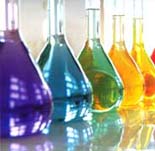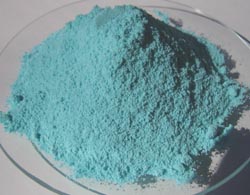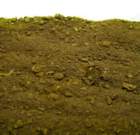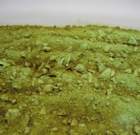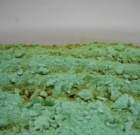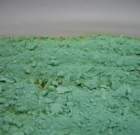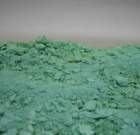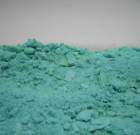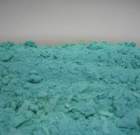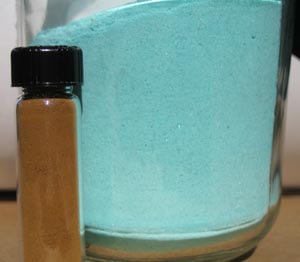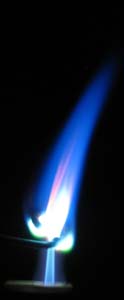Copper(II) Chloride (CuCl2)
Copper(II) chloride, also known as cupric chloride, forms a
blue-green, orthorhombic, crystalline structure in the
dihydrated (CuCl2 • 2 H2O) state and is
a mild Lewis acid readily soluble in water. Among other
things, it can be used as a flame colorant and PCB etchant.
In its anhydrous state, CuCl2 is brown in color. Anhydrous copper chloride is hygroscopic and will absorb moisture from the air to form the dihydrate. By heating the hydrated copper chloride, one can drive off the water from the CuCl2 • 2 H2O crystals to form anhydrous CuCl2.
The pictures below show the color change exhibited by a coarse, anhydrous copper chloride power over 7 days as it is exposed to air, slowly absorbing water to become CuCl2 • 2 H2O.
The final picture contrasts the colors of the anhydrous (smaller vial, left) and hydrated forms (larger container, right) of CuCl2.
|
Hydration of Copper(II) Chloride
|
The relatively low reactivity of copper compared with
other metals gives copper salts (such as CuCl2)
the ability to act as oxidizing agents. Copper chloride
can oxidize other, more active metals (such as
aluminum), to form their chloride salt, while being
reduced to copper metal in the process.
The video and pictures below depict the reaction between anhydrous copper(II) chloride and aluminum powder.
3 CuCl2 + 2 Al → 3 Cu + 2 AlCl3
The aluminum chloride produced during the reaction sublimes in the process, producing a colorful vapor as it goes on to react with the air.
| Description |
Video
|
Pictures |
|---|---|---|
| A 40-gram mixture of anhydrous CuCl2 and aluminum powder react, giving off thick, multi-colored (purple, yellow, and white), fumes. |
Copper chloride is also an effective flame colorant, able to turn flames vivid green and blue colors.
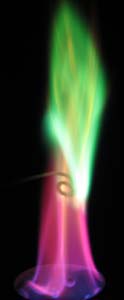
Left: Copper(II) chloride colors a cool ethanol flame a vivid green.
Right: A hot, butane flame is colored a bright blue by copper(II) chloride.
Last updated:
09/25/2017


